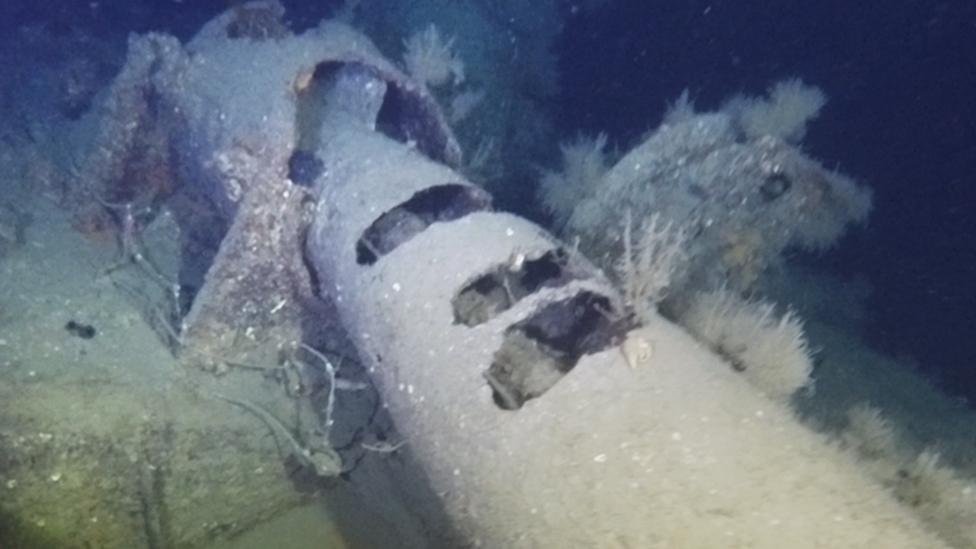World War One: Soldier who died in Battle of the Lys laid to rest
- Published
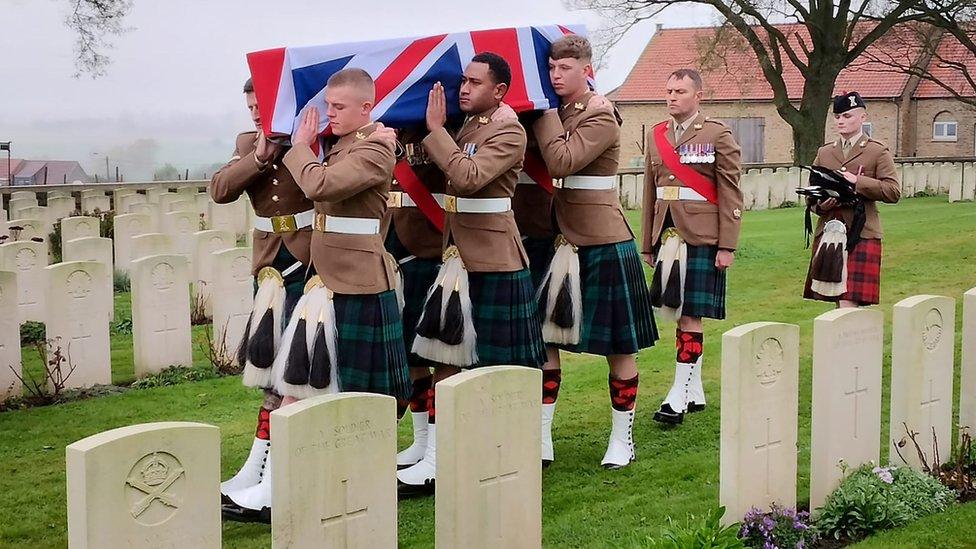
Lance Serjeant Robert Brand was buried at the Commonwealth War Graves Commission's Messines Ridge Cemetery in Belgium
The body of a Scottish soldier who was identified through his wound badge has been buried with full military honours more than a century after his death.
Lance Serjeant Robert Brand, of the 9th (Glasgow Highland) Battalion, Highland Light Infantry, is believed to have fallen in battle during World War One.
He was buried at the Commonwealth War Graves Commission's (CWGC) Messines Ridge Cemetery in Belgium on Wednesday.
Two unknown soldiers from the same regiment were laid to rest with him.
Lance Serjeant Brand was just 24 when it is believed he was killed during the Battle of the Lys, also known as the Fourth Battle of Ypres, which was fought between 7- 29 April 1918.
The remains of all three soldiers were recovered by archaeologists working in Neuve Eglise as part of a project to extend a potato farm.
Identity match
Artefacts found nearby identified them as soldiers of the 9th (Glasgow Highland) Battalion, Highland Light Infantry, and other finds indicated they died after August 1916.
This information was used in combination with battalion war diaries and other records to narrow their dates of death to a period between 13-15 April 1918, during the Battle of the Lys.
A shortlist of potential candidates was drawn up using the finds, anthropological information and documentary evidence.
Efforts were then made to trace the descendants of eight of the regiment's men listed as missing and who matched all the available evidence.
Lance Serjeant Brand was positively identified through the DNA testing of his descendants.
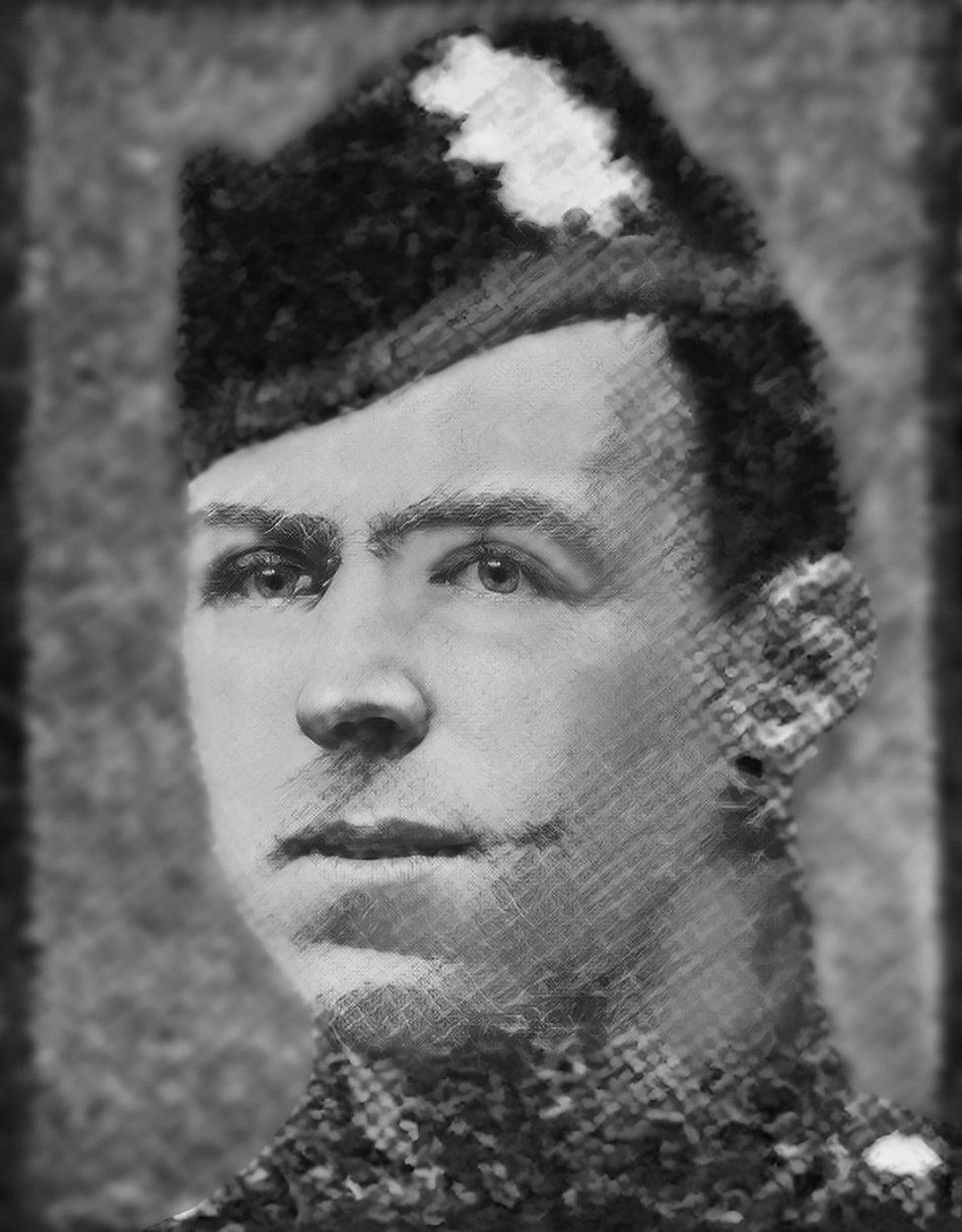
The soldier was just 24 when he died more than a century ago
Born in Stirling to William McPhail Brand and Christina Johnston Arthur on 13 September 1893, Robert Brand was the eldest of 12 children.
He first went to France with the Army in November 1914 and in 1916 he was admitted to hospital with a gunshot wound to the neck.
Following this, he was entitled to wear a wound stripe on his uniform - one of the critical artefacts that helped identify him.
This week's service for Lance Serjeant Brand was organised by the Ministry of Defence's Joint Casualty and Compassionate Centre (JCCC), also known as the MoD war detectives.
It was supported by members of the 2nd Battalion, The Royal Regiment of Scotland, who provided the bearer party, piper and bugler.
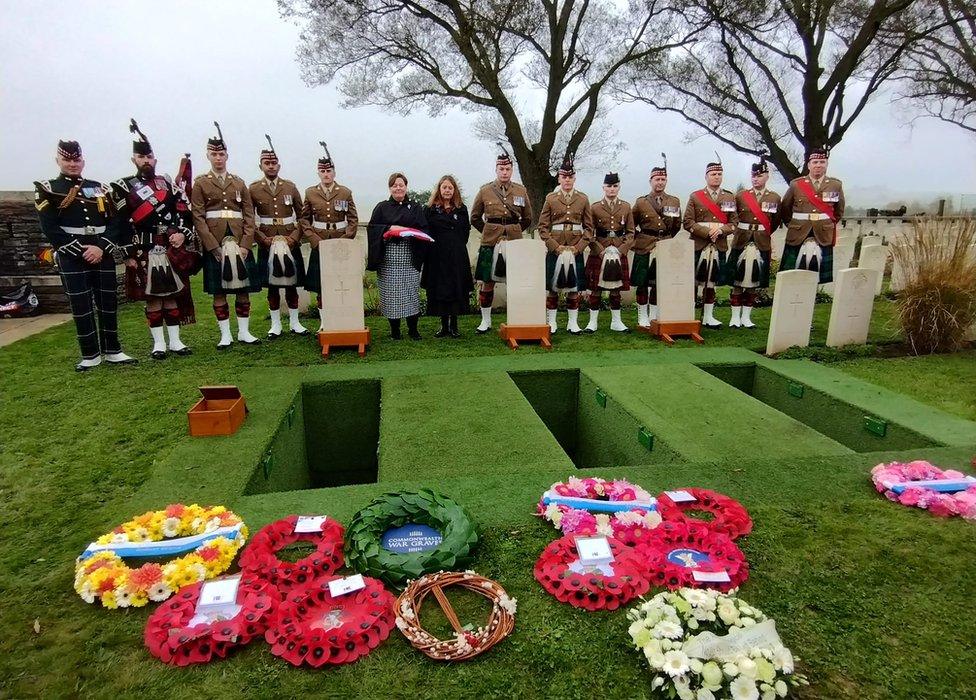
The soldier was buried alongside two others, who were not identified
Lance Serjeant Brand's great-niece Caroline Smith said her family was honoured to attend the burial.
She said: "It is amazing how remains have been found after all these decades.
"We would like to thank the JCCC whom have guided us through the process of DNA and organising the burial. Also thank you to the regiment for being here to support and honour.
"Last of all, thank you uncle Robert, who fought for our country and our family. We are very proud and grateful."
The Rev David Jeal, who conducted the service, said: "It is a great honour and privilege to finally lay our soldiers from World War One to rest.
"We remember their sacrifice and have given them the full military burial they deserved, something I and all 2 SCOTS soldiers present will never forget."
The graves of Lance Serjeant Brand and the two unknown soldiers will be cared for in perpetuity by the CWGC.
Related topics
- Published19 October 2023
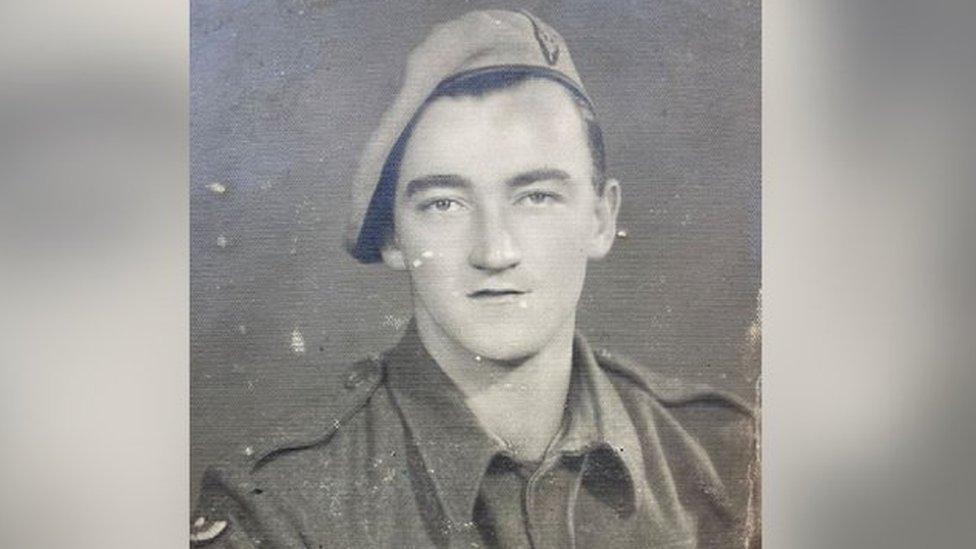
- Published25 July 2023
